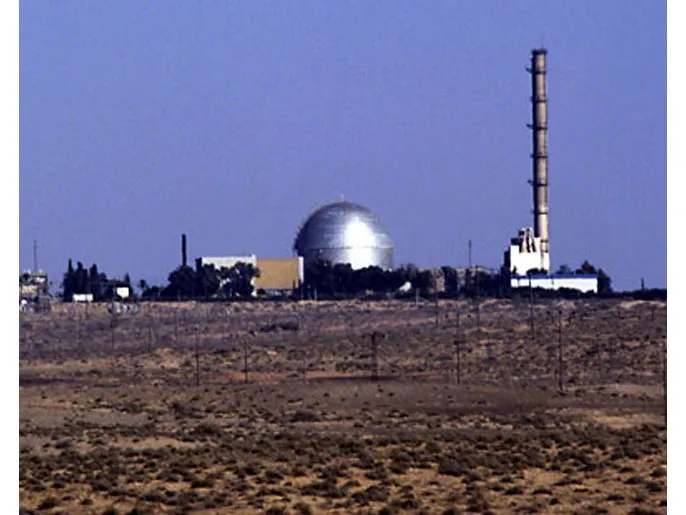As global attention remains fixed on Iran, one of the most dangerous realities in the Middle East continues to operate in the shadows: Israel’s nuclear weapons program. Shielded by US protection and a strict policy of deliberate ambiguity, this arsenal exists beyond scrutiny, inspection, or accountability.
Now, as Israel escalates tensions with Iran using its peaceful nuclear program as a pretext, the world is once again reminded of a silent threat at the heart of the region.
A senior Iranian official has warned that if the United States enters the war alongside Israel, Iran may directly target the Dimona nuclear site in southern Israel.
This threat shines a spotlight on Dimona, the core of Israel’s secret nuclear empire.
Fifth Nuclear Power, Outside the NPT
According to assessments by the Federation of American Scientists (FAS), Israel is believed to possess between 80 to 400 nuclear warheads, placing it among the top five nuclear powers globally.
Yet, unlike other nuclear-armed nations, Israel has refused to sign the 1968 Nuclear Non-Proliferation Treaty (NPT). As noted by the International Atomic Energy Agency (IAEA), this means Israel’s nuclear facilities are not subject to international inspection.
The Dimona Reactor: A Ticking Bomb?
Israel’s Negev Nuclear Research Center, commonly known as Dimona, was built in the late 1950s with assistance from France, according to declassified French-Israeli agreements. Hidden deep in the Negev desert, this facility runs mostly underground and is protected by anti-aircraft missile batteries, fences, and secrecy.
Originally operating at 26 megawatts, Dimona’s power was tripled in recent years, allowing it to produce enough plutonium annually for up to two nuclear bombs.

A 1999 satellite analysis by Jane’s Intelligence Review’s warned that neutron radiation had weakened Dimona’s concrete walls, raising the risk of structural failure.
In 2004, Channel 2 Israel revealed that dozens of former Dimona workers had died of cancer caused by radiation exposure. In 2015, Channel 10 aired “The Dark Secret: The Dimona Oven”, a report uncovering hundreds of additional cases. The government denied responsibility.
A Nuclear Empire in the Shadows
Dimona is only one part of Israel’s vast, secretive nuclear infrastructure. Israel operates at least seven nuclear-related facilities, many near Palestinian villages. These include:
- Nahal Soreq (south of occupied Ramla)
- Kishon (north of occupied Haifa)
- Kfar Zakaria (missile storage near occupied Hebron)
- Be’er Yaakov (missile manufacturing)
- Eilabun (underground tactical storage)
- Rafael and Wing 20 (warhead assembly and research)
- Palmachim (missile testing site)
Some of these sites are built under villages depopulated during the 1948 Nakba, including Nimrin near Eilabun.
Jericho Missiles: Carriers of Nuclear Warheads
Israel has deployed a range of ballistic missiles capable of delivering nuclear payloads. The Jericho series, includes:
- Jericho I: Range 500 km
- Jericho II: Up to 1,500 km
- Jericho III: Intercontinental range over 7,000 km
These missiles can carry both conventional and nuclear warheads. Israel also uses F-15 and F-35 aircraft and is believed to have nuclear-capable submarines.
In 1986, Mordechai Vanunu, a technician at Dimona, leaked evidence of Israel’s nuclear arsenal to the Sunday Times. He was kidnapped by Mossad agents, returned to Israel, and sentenced to 18 years in prison, much of it in solitary confinement.
His revelations confirmed the existence of hundreds of warheads, sophisticated production labs, and reprocessing facilities.

Nuclear Testing
Israel has never officially admitted to nuclear testing, but analysts cite multiple suspicious incidents:
- Participation in French nuclear tests in Algeria (1960), reported by Le Monde Diplomatique.
- A suspected underground test near Egypt’s border (1966).
- A mysterious double flash detected by US satellites in the Indian Ocean in 1979, believed to be a joint Israeli-South African test, as noted by The Wilson Center.
Since 1969, Israel has benefited from a US policy of silence. Declassified U.S. government documents reveal a secret agreement between President Nixon and Prime Minister Golda Meir to allow Israel to maintain its arsenal without inspection or acknowledgment.
This policy continues to this day. Despite being a member of the IAEA since 1957, Israel has refused to sign the NPT, and remains outside other arms control agreements, including:
- The Biological Weapons Convention (1972)
- The Hague Code of Conduct against Ballistic Missile Proliferation (2002)
A Dangerous Double Standard
Israel continues to oppose nuclear development, even peaceful programmes, in neighboring countries. It bombed Iraq’s Osirak reactor in 1981, assassinated nuclear scientists in Iran, and leads a war on Iran’s nuclear program.
Meanwhile, its own arsenal grows unchecked. In 2008, former US President Jimmy Carter stated that Israel possesses “at least 150 nuclear weapons.”
Israel’s nuclear monopoly destabilizes the region. Its lack of transparency, its refusal to sign international treaties, and its powerful allies allow it to ignore global norms.
With tensions rising and threats increasing, Dimona is no longer just a symbol of power; it is a potential epicenter for disaster.
If the facility were struck, or if aging infrastructure failed, the environmental and human consequences would be catastrophic. A radioactive leak could kill hundreds of thousands, contaminate neighboring states, and reshape the region for generations.
C. QNN

